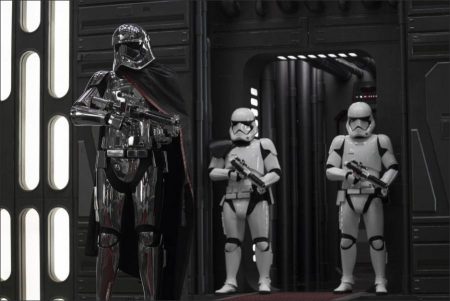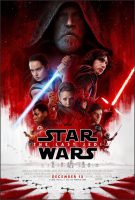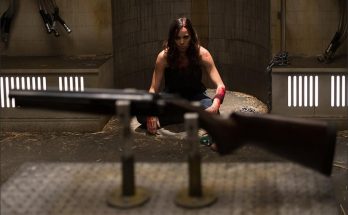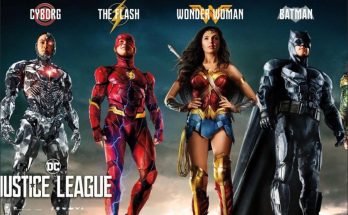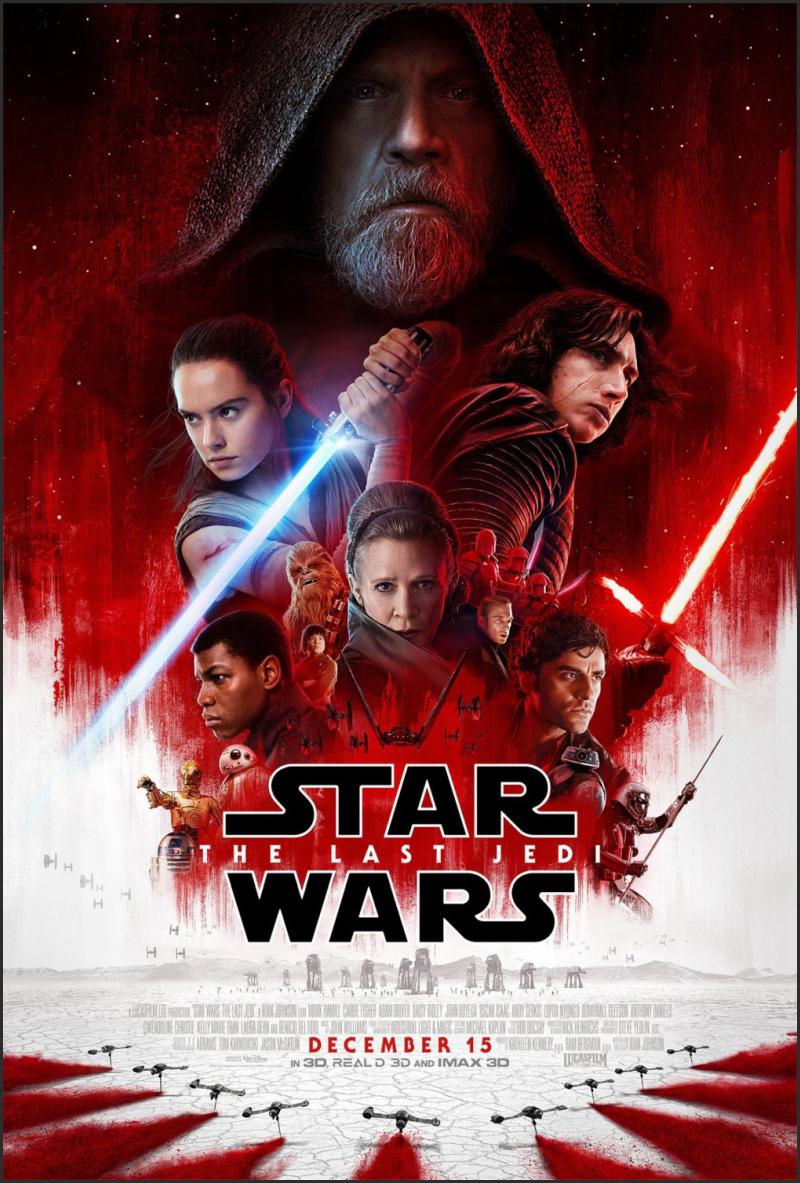Film Review for Star Wars: The Last Jedi
Writer / director Rian Johnson’s “Star Wars: The Last Jedi” is a sprawling, incident- and character-packed extravaganza that picks up at the end of “Star Wars: Episode VII – The Force Awakens” and guides the series into unfamiliar territory. It’s everything a fan could want from a “Star Wars” film and then some.
Even the sorts of viewers who spend the entire running time of movies anticipating every plot twist and crowing “called it!” when they get one right are likely to come up short here. But the surprises usually don’t violate the (admittedly loose) internal logic of the universe George Lucas invented, and when they seem to, it’s because the movie has expanded the mythology in a small but significant way, or imported a sliver of something from another variant of Lucas’ creation (Genddy Tartakovsky’s magnificent TV series “Clone Wars” seems to have influenced the last act).
The first part of “The Last Jedi” cross-cuts between the remnants of our heroes’ ragtag fleet (led by the late Carrie Fisher’s Leia) running away from the First Order, aka the next-generation version of the Empire; and Rey (Daisy Ridley) on the aquatic planet Ahch-To (gesundheit!) trying to convince the self-exiled Jedi master Luke Skywalker (Mark Hamill, whose sandblasted face becomes truly iconic in close-ups) to overcome his grief at failing a group of young Jedi trainees and rejoin the Resistance. The New Order’s Supreme Leader Snoke (Andy Serkis plus CGI) has grand plans for both Rey and his Darth Vader-obsessed apprentice Kylo Ren (Adam Driver). The leathery old coot may not be a great bad guy—he’s too much of a standard-issue deep-voiced sadist, in a Marvel mode—but he is quite the chess player, and so is Johnson.
I’m being vague here on purpose. Suffice to say that, despite being comprised of variations on things we’ve been experiencing directly (in “Star Wars” films) and indirectly (in “Star Wars”-inspired entertainment) since 1977, “The Last Jedi” still manages to maneuver in unexpected ways, starting with the decision to build a whole film around a retreat where the goal is not to win but to avoid being wiped out. Along that narrative backbone “The Last Jedi” strings what amount to several tight, often hastily devised mini-missions, each of which either moves the heroes (or villains) closer to their goals or blows up in their faces. The story resolves in lengthy, consecutive climaxes which, refreshingly, don’t play like a cynical attempt to pad things out. Old business is resolved, new business introduced.
And from scene to scene, Johnson gives veteran characters (Chewbacca and R2-D2 especially) and those who debuted in “The Force Awakens” enough screen time to showcase them at their best while also introducing compelling new faces (including a heroic maintenance worker, Kelly Marie Tran’s Rose Tico; a serene and tough vice admiral in the Resistance, played by Laura Dern; a sort of “safecracker” character played by Benicio Del Toro).
“Jedi” does a better job than most sequels of giving the audience both what it wants and what it didn’t know it wanted. The movie leans hard into sentiment, most of it planted in the previous installment, some related to the unexpected passing of one of its leads (Fisher—thank goodness they gave her a lot of screen time here, and thrilling things to do). But whenever it allows a character to cry (or invites us to) the catharsis feels earned. It happens rather often—this being a film preoccupied with grieving for the past and transcending it, populated by hounded and broken people who are afraid hope will be snuffed out.
Rey’s anguish at not knowing who her parents are and Kylo Ren’s trauma at killing his own father to advance toward his “destiny” literally as well as figuratively mirror each other. Lifting a bit of business glimpsed briefly in “The Empire Strikes Back” and “Return of the Jedi,” Johnson lets these all-powerful characters telepathically “speak” to each other across space as easily as you or I might Skype with a friend. This gimmick offers so much potential for drama and wry humor that you might wonder why nobody did it earlier.
Sometimes “The Last Jedi” violates our expectations in a cheeky way that stops short of telling super-fans to get over themselves. There’s a touch of “Spaceballs” and “Robot Chicken” to some of the jokes. Snoke orders Kylo to “take off that ridiculous helmet,” Luke chastises an old friend for showing a nostalgic video by muttering “That was a cheap move,” and an early gag finds one of the heroes calling the bridge of a star destroyer and pretending to be stuck on hold. This aspect adds a much-needed dash of self-deprecating humor (“The Force Awakens” was often a stitch as well, especially when Han Solo, Chewbacca, BB-8 and John Boyega’s James Garner-like hero/coward Finn were onscreen), but without going so meta that “The Last Jedi” turns into a smart-alecky thesis paper on itself.
The movie works equally well as an earnest adventure full of passionate heroes and villains and a meditation on sequels and franchise properties. Like “The Force Awakens,” only more so, this one is preoccupied with questions of legacy, legitimacy and succession, and includes multiple debates over whether one should replicate or reject the stories and symbols of the past. Among its many valuable lessons is that objects have no worth save for the feelings we invest in them, and that no individual is greater than a noble idea.
Johnson has made some very good theatrical features, but the storytelling here owes the most to his work on TV’s “Breaking Bad,” a playfully convoluted crime drama that approached each new installment with the street illusionist’s panache: the source of delight was always in the hand you weren’t looking at. There are points where the film appears to have miscalculated or made an outright lame choice (this becomes worrisome in the middle, when Dern’s Admiral Holdo and Oscar Isaac’s hotshot pilot Poe Dameron are at loggerheads), but then you realize that it was a setup for another payoff that lands harder because you briefly doubted that “The Last Jedi” does, in fact, know what it’s doing.
This determination to split the difference between surprise and inevitability is encoded in “The Last Jedi” down to the level of scenes and shots. How many Star Destroyers, TIE fighters, Imperial walkers, lightsabers, escape pods, and discussions of the nature of The Force have we seen by now? Oodles. But Johnson manages to find a way to present the technology, mythology and imagery in a way that makes it feel new, or at least new-ish, starting with a shot of Star Destroyers materializing from hyperspace in the sky over a planet (as seen from ground level) and continuing through images of Rebel ships being raked apart by Imperial cannon fire like cans on a shooting range and, hilariously, a blurry video conference in which the goggle-eyed warrior-philosopher Maz Kanata (voiced by Lupita Nyong’o) delivers important information while engaging in a shootout with unseen foes. (She calls it a “union matter.”)
There’s greater attention paid here to color and composition than in any entry since “The Empire Strikes Back.” Particularly dazzling are Snoke’s throne room, with its Dario Argento-red walls and red-armored guards, and the final battle, set on a salt planet whose flat white surfaces get ripped up to reveal shades of crimson. (Seen from a distance, the battlefield itself seems to be bleeding.) The architecture of the action sequences is something to behold. A self-enclosed setpiece in the opening space battle is more emotionally powerful than any action sequence in any blockbuster this year, save the “No Man’s Land” sequence of “Wonder Woman,” and it’s centered on a character we just met.
There are spots where the film can’t figure out how to get the characters to where it needs them to be and just sort of shrugs and says, “And then this happened, now let’s get on with it.” But there are fewer such moments than you might have gone in prepared to forgive—and really, if that sort of thing were a cinematic crime, Howard Hawks would have gotten the chair. Most importantly, the damned thing moves, both in a plot sense and in the sense of a skilled choreographer-dancer who has visualized every millisecond of his routine and practiced it to the point where grace seems to come as easily as breathing. Or skywalking.
Star Wars: The Last Jedi (2017)
Directed by: Rian Johnson
Starring: Mark Hamill, Carrie Fisher, Adam Driver, Daisy Ridley, John Boyega, Oscar Isaac, Andy Serkis, Lupita Nyong’o, Domhnall Gleeson, Anthony Daniels, Gwendoline Christie, Kelly Marie Tran, Laura Dern, Benicio del Toro
Screenplay by: Rian Johnson, George Lucas
Production Design by: Rick Heinrichs
Cinematography by: Steve Yedlin
Film Editing by: Bob Ducsay
Costume Design by: Michael Kaplan
Set Decoration by: Richard Roberts
Art Direction by: Andrew Bennett, Neal Callow, Todd Cherniawsky, Dean Clegg, John Dexter, Jason Knox-Johnston, Chris Lowe, Matt Wynne
Music by: John Williams
MPAA Rating: PG-13 for sequences of sci-fi action and violence.
Distributed by: Walt Disney Pictures
Release Date: December 15, 2017

